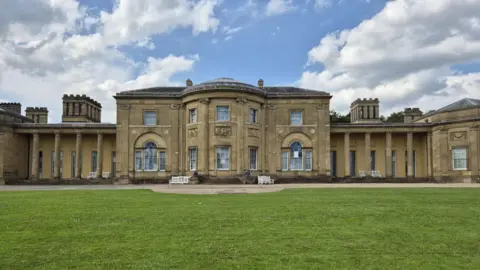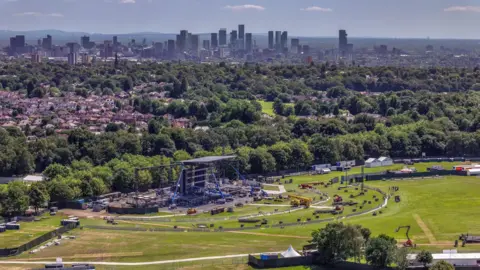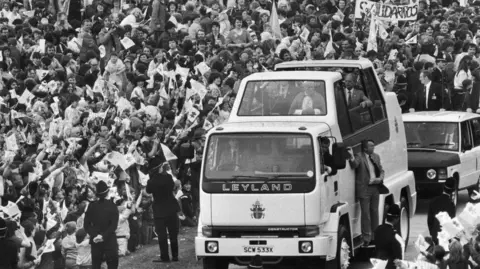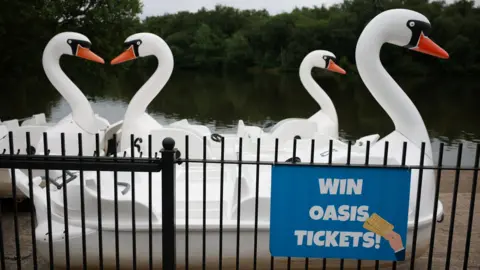The 'Georgian paradise' hosting the Oasis concerts
 BBC
BBCManchester's Heaton Park is centre stage this week as about 340,000 fans are expected to watch Oasis perform over five concerts, which kicked off on Friday night.
Dr Peter Lindfield, an architectural historian who has specialised in the city's heritage, says the homecoming gigs will "definitely not" be what the park's Georgian owner Sir Thomas Egerton would have envisaged happening there.
However he highlights "it's still entertainment and that's what these grand country estates were in some ways designed for".
"The Oasis concerts are a modern equivalent but on a slightly more louder scale with far more people," he says.
"In some ways, people are going to be enjoying a Georgian paradise."
 Getty Images
Getty ImagesDr Lindfield describes Sir Thomas as a politician who was an "advocate of Manchester's cotton industry" linked to the "movers and shakers in the region".
They included the Cheshire-based Grosvenor dynasty – believed to be among the wealthiest families in the country - and the Egerton branch which owned the Tatton Park estate in Knutsford.
Heaton Park even had a popular racecourse in the 1830s, while the Grade I-listed hall remains the centrepiece with its panorama of the city and surrounding countryside.
Designed by Georgian architect James Wyatt, the house was inspired by the "classical antiquity which the aristocracy and all the well-to-do in the 18th Century saw when they went to Italy on the grand tour", Dr Lindfield says.
"What James Wyatt did was make this house a grand representation of basically ancient Rome, and it says of Thomas Egerton how fashionable he is, his wealth, his significance within society and it just basically says 'look at me'."
 Getty Images
Getty ImagesDespite the Egerton family's prestige, a lack of male heirs further down the line led to the property being sold in 1902 for £230,000 - about £25m in today's money – to the Manchester Corporation, which then turned it into a public park.
The hall became a military hospital during World War One and a Royal Air Force camp was accommodated in the park in World War Two.
In 1982, the site was chosen to host a Mass with more than 100,000 people, when Pope John Paul II undertook the first papal tour of the UK.
 Reuters
ReutersAbout 80,000 fans per gig are expected at Heaton Park to watch the Gallagher brothers perform.
"When the property's so big," says Dr Lindfield, "it's a huge opportunity to do really exciting things."
Listen to the best of BBC Radio Manchester on Sounds and follow BBC Manchester on Facebook, X, and Instagram. You can also send story ideas via Whatsapp to 0808 100 2230.
